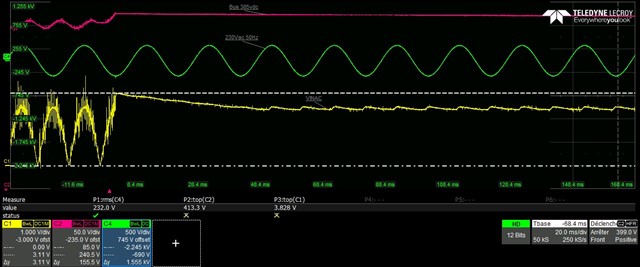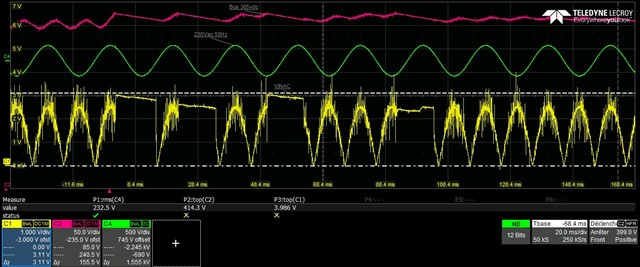Tool/software:
Hello,
We are using this controller for a PFC with universal input 85 Vac till 265VAC.
The PFC is designed for 2250W nominal.
When we connect the converter to a voltage of 230VAC for exemple, and then we load to 2000w and we try to find the power limit by increasing the power demand, the first time the output voltage starts to decrease around 2240W.
When we remove the load (transient from 2000 W to 0 or transient fromm 2000W to 500W ) and when we apply again the load ( 2000 W) , and when we try now to find the the power limit, the converter starts to reduce the output voltage around 1850W.
Here attached the measured voltage on Vinac in yellow when we remove the load from 2000W to 0W

and when we change the load from 2000W to 500W

It seems that the controller has kept in memory the wrong KVFF value after removing the load.
We can obvserve some transients on vinac when we change the load, but the voltage has came back to its right value after few miliseconds.
Why the converter keep in memory, the wrong kvff value?
Do you have an explanation, or advices to solve this problem ?
Thanks a lot ,
Gregory

